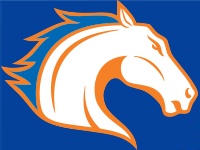Story, Dale
6/25/14
MEXICO
- 1876-1910—Porfirio Diaz
- 1910-20—Revolution
- 1920s—Consolidation of the Revolution
- 1929—Calles creates the Party
- 1934-40—Lazaro Cardenas
- Independent
- “Barnstorming” campaign
- Four sectors of the Party
- Pro-labor
- Nationalizations
- 1934-present—6 year Presidential terms
- 1968—Tlatelolco
- Most recent Presidents
- 1988—Salinas
- 1994—Zedillo
- 2000—Fox (PAN—1st non-Priista)
- 2006—Calderon (PAN—with Lopez Obrador of PRD protesting)
- 2012--Enrique Pena Nieto (PRI)
- Benign authoritarian structure, 1920s-2000
- Electoral system
- PRI dominates all levels
- Carrot and the stick (cooptation and control/intimidation)
- Political machine
- Imagery
- If you can’t beat them, join them
- Political balance of PRI
- Other parties
- PAN—conservative, trad. opposition, averaged 15%, regional (especially northern), pro-clerical, pro-business, Fox and Calderon
- Left—very small and divided until 1988 (Cuauhtemoc Cardenas)—PRD today
- Challenges to the PRI
- Political legitimacy of tecnicos
- Declining electoral support
- Presidential succession
- Interest groups
- Labor and peasants (within the PRI and highly controlled)
- “Popular” sector (middle-class, also within the PRI but slightly more autonomy)
- Military (outside the PRI and under civilian control)
- Media (outside the PRI—classic example of mixture of freedom and repression)
- Business (outside the PRI—and ultimately autonomous due to economic power)
- Influences on democratization, post-2000
- Economic opening
- Rejection of the PRI
- Destabilization and democratization?
|

